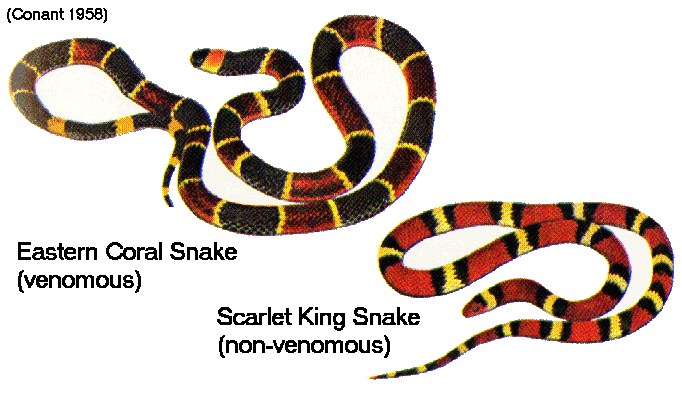Reply
Wed 1 Dec, 2004 09:58 pm
Are all organisms that look alike the same species?
It is for my science class, and I can't think of an answer than makes sense.

Well, I can think of some that don't look alike that are the same species (butterflies/caterpillars for example).
Certainly many fish look similar but are different species.
I can't tell most trees apart to save my life.
Alligators look similar to crocodiles.
Dolphins look a lot like sharks.
I would think you need a definition of "look alike." There may very well be two species that look exactly the same, but I can't think of them.
Stole my post from the "connect the picture" thread, did you? LOL.
Also, think about microscopic organisms. I think there are lots of species of strep. (Or would those be strains?)
A good way to approach this is to look at the dictionary definition of "species"...
Species
1. A fundamental category of taxonomic classification, ranking below a genus or subgenus and consisting of related organisms capable of interbreeding.
This last part I underlined is the most important. For two organisms to be in the same species, they must be "related" and they must be capable of having children with each other.
So the question is, is it possible for two types of organisms to "look alike" even if they are not able to have children together?
Is is possible for two types of organisms to "look alike" and not be related?
(My post above is a hint...).
In botany there are lots of plants that look alike insome way which aren't related at all. Their latin names will often reflect that fact. Like the london planetree - it's latin name is platanus x acerifolia. Acerfolia means that it has leaves like maples (Acers).
Mimicry is a protective mechanism whereby one species will disguise itself as another to take advantage of the other species defenses.
Here's one example:

Horses have several different species inside the same genus. Add zebras in there to make things more complicated. Look at this link
http://www.chaffeezoo.org/animals/horses.html
As the others posted there are many example of almost look alike that are different species, however if they are close enough in appearance to be identical twins, they are all but surely the same species. Most of us would miss a tiny difference indicating they are not identical twins, but they might be the same species even though they don't look alike. Appearance guesses need to be confirmed by DNA tests and attempting breeding if the DNA comparisons are marginal. Neil
Thanks for the info and pics Stilly. I now know I've been eating the wrong foods, especially snakes. I suppose that explains the neurotoxins....oh boy....<thump>
There are two types of mimicry where different species look alike, Batesian and Mullerian mimicry. I would put both these into a search engine.
Batesian mimicry has already been mentioned as one harmless speies mimicing a poisonous or bad-tasting species. Mullerian mimicry is where a poisonous or bad-tasting speices mimics another poisonous or bad-tasting species.
One excellent example of Mullerian mimicry is butterflies in the family Heliconidae. Many species of butterflies in the genus Heliconius look similar. The strategy is that a bird having a bad experience with any of the species of the genus Heliconius will recognize other similar-looking species and avoid them.
In Batesian mimicry a harmless species mimics a poisonous or bad-tasting species. The classic example is the edible viceroy mimicing the inedible monarch. The inedible species must be much more common that the edible species so more birds will have bad experiences. A naive bird eating a monarch will swallow a monarch, and minutes later throw it back up. It will look at it and never eat another monarch or similar-looking viceroy.
Robert Ardry mentions a colony of insects that can mimic a flower. A flower that has become extinct, by the way. I believe this was in his Territorial Imperative. I would say that the answer to your question is "no."
If the organisms can mate with each other and produce offsprings that can actually have offsprings, and on, they would be in an identical specie.